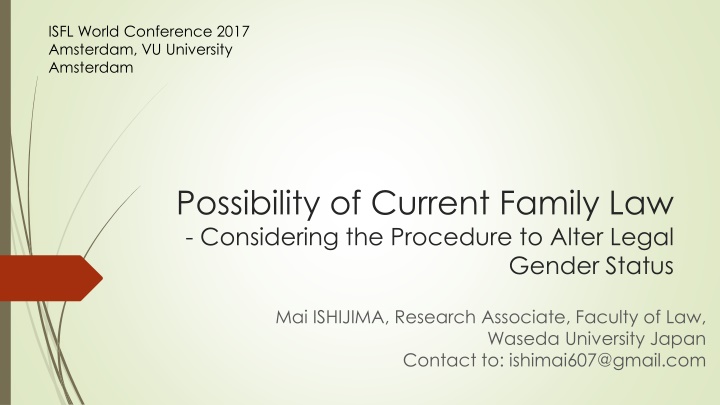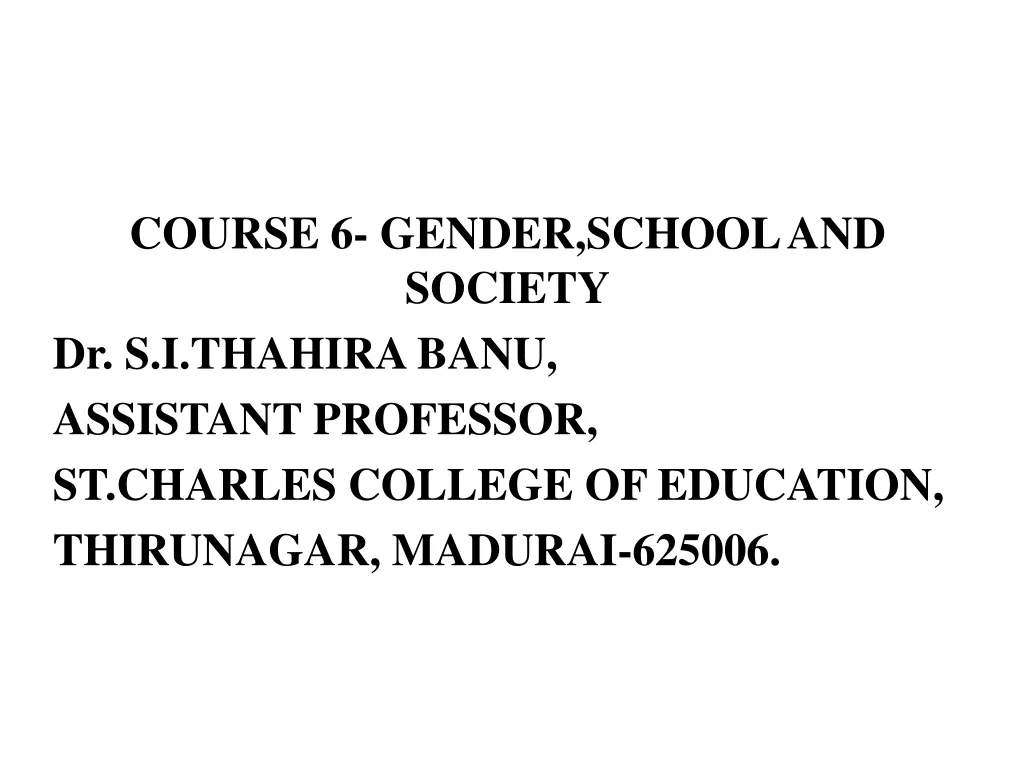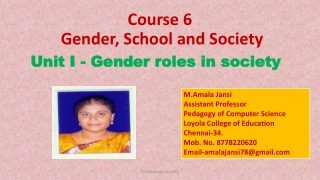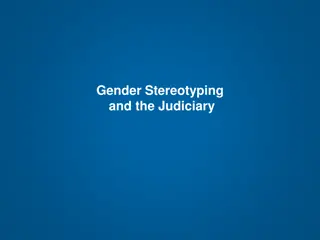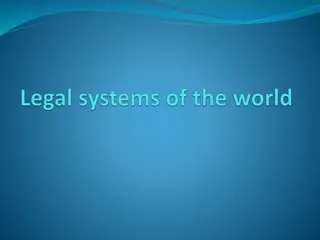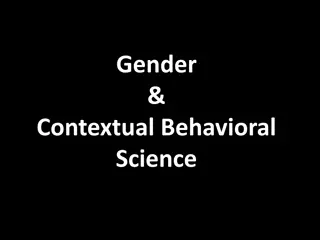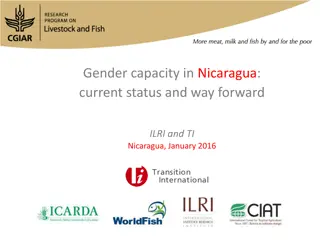Possibility of Current Family Law in Addressing Legal Gender Status Changes
This presentation by Mai Ishijima explores the potential interim solutions that current family law could offer for newly-recognized parent-child relationships, particularly in abolishing requirements like physical modifications and sterilization in legal gender status alteration processes. It delves into Japanese laws concerning parent-child relationships, case studies on gestational surrogacy and paternity presumption, and the Act on Special Cases in Handling Gender Status for Persons with Gender Identity Disorder in Japan.
Download Presentation

Please find below an Image/Link to download the presentation.
The content on the website is provided AS IS for your information and personal use only. It may not be sold, licensed, or shared on other websites without obtaining consent from the author.If you encounter any issues during the download, it is possible that the publisher has removed the file from their server.
You are allowed to download the files provided on this website for personal or commercial use, subject to the condition that they are used lawfully. All files are the property of their respective owners.
The content on the website is provided AS IS for your information and personal use only. It may not be sold, licensed, or shared on other websites without obtaining consent from the author.
E N D
Presentation Transcript
ISFL World Conference 2017 Amsterdam, VU University Amsterdam Possibility of Current Family Law - Considering the Procedure to Alter Legal Gender Status Mai ISHIJIMA, Research Associate, Faculty of Law, Waseda University Japan Contact to: ishimai607@gmail.com
Purpose of this presentation Could literal Application of current family law offer an interim solution for newly-recognized parent-child relationships? Especially it could help to abolish existing requirements of physical modifications and sterilization from the procedure to alter one s legal gender.
Japanese Law: How to Establish Parent-Child Relationships? Mother-Child Relationship - The woman who has given birth to a child is mother of the child. Father-Child Relationship - A child conceived* by a wife during marriage is presumed to be a child of her husband. - A father or a mother may recognize his/her child out of wedlock. (Case Studies) (Civil Code Art. 772) (Civil Code Art. 779) *A child born after 200 days from the marriage or within 300 days of the day of the dissolution or rescission of marriage are presumed to have been conceived during marriage.
Current Trend in Japanese Case Studies A gestational (host) surrogacy took place in a foreign country. Shall mother-child relationship be established between the child and the intended mother? (2007) Shall Presumption of Paternity be applied to married trans man? (2013) M F M2 Presumption of Paternity Could the presumption of the father-child relationship between M and the child be rebutted, based on the DNA test conducted by the wife? (2014) Biological tie Kid Living as a family
Japanese GID Law Act on Special Cases in Handling Gender Status for Persons with Gender Identity Disorder (2003-) (Art. 3 ) A person with Gender Identity Disorder may request to alter their legal gender status to family court, if the person: (i) is not less than 20 years of age; (ii) is not currently married; (iii) currently has no child who is a minor; (iv) has no reproductive glands or whose reproductive glands have permanently lost function; and (v) has a body which appears to have parts that resembles the genital organs of those of the Opposite Gender.
What Types of Parent-Child Relationships Could occur? (A) A person who changed his legal gender from Female to Male, got married with a woman, and this spouse gave birth to a child. (B) A person who changed his legal gender from Female to Male recognized a child . (C) A person who changed his legal gender from Female to Male, gave birth to a child by himself. (D) The ex-wife of a person who changed her legal gender from Male to Female, gave birth to a child during the presumption period*. (E) A person who changed her legal gender from Male to Female recognized a child. *Within 300 days after divorce
Case A, B, and C (A) (F to) M F (B) (F to) M F Presumption of Paternity Recognizes Child Child (C) (F to) M( )F Child
Case D (D) F (M to) F Presumption of Paternity Child Dissolution/ Rescission of Marriage Within 300 days Birth of the Child t Altering one s legal gender from Male to Female
Case E (E) F (M to) F Recognizes Child Requirement iii* (No minor child) Recognition Birth of the Child t Altering one s legal gender from Male to Female
Summary of Case A-E In the case (A), the relationships of the trans man to the child would be Father. In the case (B), the relationships of the trans man to the child would be Father. In the case (C), the relationships of the trans man to the child would be Mother. In the case (D), the relationships of the trans woman to the child would be Father. In the case (E), the relationships of the trans woman to the child would be Father.
This is only an Interim Remedy Where mother-child relationship can be only established by the fact of giving birth, there is no chance for trans woman to be a mother of the child. Though the existing law already allows discordance of father/mother status and male/female status, this discordance is still not preferable as it may cause hesitation to recognize a child or/and to have their own child.
Conclusion and Comment Though the family law itself should be revised and the definition of the father/mother/parent in the law should be examined, the elimination of physical requirements which have affected trans* people should be implemented without delay. While this interim solution offers a solution to the family law issues, other legal fields should also be examined since they likely use the terms of father, mother, man, woman, or other gender related terms expecting certain reproductive capability. Both long-term and short-term measures should be taken to recognize diverse family relationships, and it will be worthwhile to share the know-how internationally.
